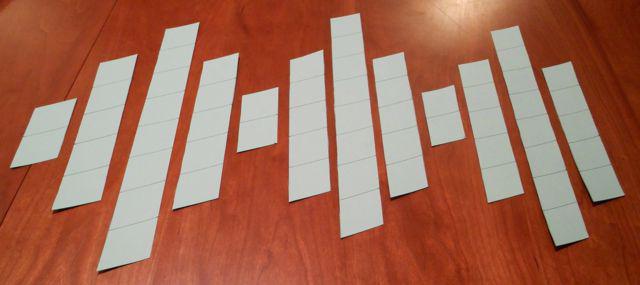All parents want their child to be smart and developed. Therefore, many try to teach kids to immediately count and write. Educators do not recommend doing this with children. They believe that first the child must master basic mathematical concepts. These are not numbers. First of all, the child must understand: few, many, top, bottom, big, small, etc. Figures are a small part of mathematics. They should be available for the baby not earlier than 4 years. Every year, the child's understanding of mathematics is expanding more and more. Children in the second younger group master well what forms, colors, etc. are. Even orientation in space is considered mathematics. Therefore, FEMP in the second younger group does not provide figures.
Before training, you need to develop a lesson plan for the year. So you will be sure that children will receive all the necessary ideas about mathematics.
FEMP Planning at the DOE
It is hard to imagine a school without math. Prepare for her children from a young age. Parents and educators make a lot of efforts so that kids have an idea of elementary mathematics. The plan plays an important role. Without it, there can be no consistent study of this science. First, the plan is distributed for the year by months. It describes what children need to be taught in a year, what they should know at the end. Then it is signed for a month by days (calendar plan). It indicates the days of classes. In the second younger group, they are held 1 time per week. The plan signs the goal, tasks, conducting didactic games, getting to know the world around. Next, a long-term lesson plan is created by week. Classes in kindergartens take place according to one scheme, and games are served different.
For instance:
September - 1 week:
1. Objective: didactic game "Learning Matryoshka".
2. Purpose: to understand what “one”, “there is not one”, “many” (to develop ideas about a group of objects).
September - 2 week:
1. Objective: didactic game "Balloons".
2. Purpose: To develop an understanding of shape, variety and colors.
September - 3 week:
1. Objective: The didactic game “We decompose objects correctly”.
2. Purpose: to learn to develop attention, thinking.
September - 4 week:
1. The task is the didactic game “Hide the Bear”.
2. Purpose: to learn forms and objects, how to correlate them correctly.
As you noticed, FEMP in the second junior group is studied exclusively through didactic games. Also, the plan needs to be written for other months. Then the children, parents and carers will have no questions.
Features of quantitative representations
It has been proven that children are easier to learn during the game. If you conduct only classes with them, it will be boring, uninteresting, the kids will quickly fall apart from learning new things. It is necessary for children to give guidance on the formation of elementary mathematical representations only in the form of games. They in the second youngest group learn to distinguish when there are many objects and when there are none. Try to give two toy hares, and then ask how many he has them. The kid will say: "Here is one and here is one." If you give a child 3.4 years old 5-6 toys, he will say: "A lot."
You can hide them for 3 minutes and ask: "How many toys do you have?" The child will answer: "There is not one." These are general answers. They may differ, depending on the personality of the baby, but the meaning will be the same. It concerns those children who cannot count.
Representation of the value
The plan should indicate how to compare and measure values. Take the dolls and explain to the kids where the smallest and largest. Comparing 3 or more items at once is undesirable; children get confused quickly. Two toys are enough for a start. The value can be compared not only in height but also in length. It can be bright multi-colored ribbons (long - green, short - pink). Also by thickness (the doll is thin, the bunny is thick).

In order for children to be interested in knowing the size, you can tell them a story: “The prince and princess are going to the carnival, they need beautiful belts, now there are ribbons, short and long, to whom will we tie them?” Two kids go out and tie. After a while, the teacher says: “Oh, the prince and the princess want to exchange belts, who will help them?” Two other kids come out. As a result, the ribbons can be stacked one on top of the other and show how to figure out where the short and the long are. Thus, the fine motor skills of fingers and the idea of size develop in children.
The study of geometric shapes
All objects that surround the child have their own form. Best of all, children remember the geometric shapes in the game. Do you play ball? Explain to the baby that it is round. Look out the window? Say it's square. So you also study FEMP in the second junior group.
The teacher or parents can draw geometric shapes on the sheet, and cut shapes from the cardboard under them. Let the child apply them to the drawing. Do not hesitate, the kids will find the right figure in seconds. They are given training very easily. Children can be shown a picture where they will be drawn: a circle, a plate, a piano, a cup. Ask them to find round objects. Children are very fond of such an FEMP lesson, and therefore they will not remain indifferent to it.
Spatial representation in children
Children should be able to navigate in space: on the street, in the room, on a sheet of paper, in the movement of direction, in time. Throw the ball with the baby, while explaining that he is flying up, falling down. Plant 3 toys in order. In the middle, for example, a hare. Let the children explain who is sitting in front, behind, left, right, etc. It is advisable to swap toys. During breakfast, explain to the children that it is morning. Also at lunch or dinner. Talk to the children about the night. During the lessons of fine art, let the children draw paths and explain where they lead: forward, left, right.
Classes in kindergartens about space develop children's imagination, attention, fine motor skills, form the ability to navigate both in a group and on the street.
FEMP didactic games in the second junior group
Interesting tasks in a playful way help children learn a lot of new and interesting things. With preschoolers, you need to learn through didactic games. The formation of elementary mathematical representations offers many didactic games to study the material. In the summer, you can consolidate all the knowledge gained for the school year. This must be done by playing: “Let's compare the objects” (offer the children 2 toys: high and low). “Who learned to compare the strips? Where is wide, where is narrow? ”; "What color ran away from us?" (show 5 squares of primary colors, then hide one. Guess what they love, what color is gone).

You can also hide geometric shapes. There is a very interesting and famous game at all times: “hot-cold” (let them play a detective and find a small toy hidden by the teacher). This game perfectly helps to navigate in space. Prepare a lot of geometric shapes for children in one shape. Let's say squares. Only they need to be made half large - one size, and the other - small. Give them two boxes. Let them spread out in size.
In fact, there are a lot of didactic games, you can’t count all of them. Parents and carers can come up with their own options. The main thing is that during the classes the children should have fun and interesting.
What should children be able to do at the end of the school year?
When you have completed all the classes that were planned, then you can consolidate the lessons with the kids. As a result, children should be able to:
1. Orient, how many objects they have (a lot, a little, no one).
2. Must understand the difference between big-small.
3. What strip, ribbon, path (wide-narrow, long-short).
4. Where the toy is thick, where thin.
5. What is morning or night.
6. Must be able to determine: what is below, above, front, back, left, right.
7. Where is their head, arms, legs, etc.
8. Must distinguish between shapes, colors.
Tips for parents and carers
No need to scold the baby if he does not succeed. Or he forgot the name of the figure or color. You can disappoint him with his studies. If the baby cannot cope with something, help him gently, with a smile on his face. You will see how willingly he wants to prove to others that everything can. In pedagogy, the most important thing is to be patient. What is elementary for adults seems very difficult for a child. Put yourself in the place of the baby: what will you feel if they shout at you? Of course, anger. The baby feels the same, only he cannot express much. Be a kind and patient teacher, only then can you achieve the desired results.